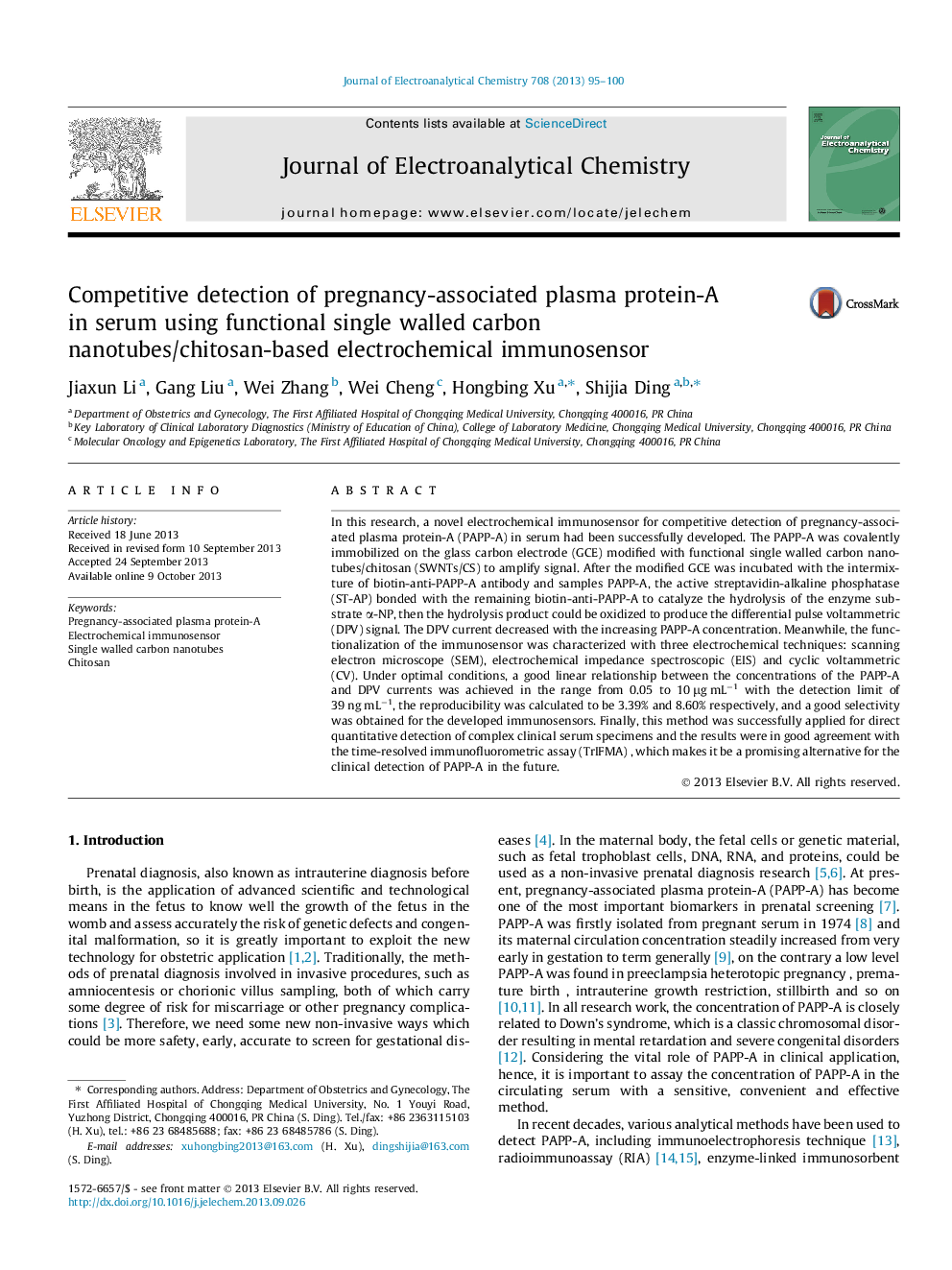| Article ID | Journal | Published Year | Pages | File Type |
|---|---|---|---|---|
| 218978 | Journal of Electroanalytical Chemistry | 2013 | 6 Pages |
•A novel electrochemical immunosensor was developed for the detection of PAPP-A.•Functional SWNTs/CS nanocomposite and bioenzyme result in dual signal amplification.•This method was successfully applied to detect PAPP-A in serum specimens.•Provide a potential electrochemical immunosensor platform for PAPP-A detection.
In this research, a novel electrochemical immunosensor for competitive detection of pregnancy-associated plasma protein-A (PAPP-A) in serum had been successfully developed. The PAPP-A was covalently immobilized on the glass carbon electrode (GCE) modified with functional single walled carbon nanotubes/chitosan (SWNTs/CS) to amplify signal. After the modified GCE was incubated with the intermixture of biotin-anti-PAPP-A antibody and samples PAPP-A, the active streptavidin-alkaline phosphatase (ST-AP) bonded with the remaining biotin-anti-PAPP-A to catalyze the hydrolysis of the enzyme substrate α-NP, then the hydrolysis product could be oxidized to produce the differential pulse voltammetric (DPV) signal. The DPV current decreased with the increasing PAPP-A concentration. Meanwhile, the functionalization of the immunosensor was characterized with three electrochemical techniques: scanning electron microscope (SEM), electrochemical impedance spectroscopic (EIS) and cyclic voltammetric (CV). Under optimal conditions, a good linear relationship between the concentrations of the PAPP-A and DPV currents was achieved in the range from 0.05 to 10 μg mL−1 with the detection limit of 39 ng mL−1, the reproducibility was calculated to be 3.39% and 8.60% respectively, and a good selectivity was obtained for the developed immunosensors. Finally, this method was successfully applied for direct quantitative detection of complex clinical serum specimens and the results were in good agreement with the time-resolved immunofluorometric assay (TrIFMA) , which makes it be a promising alternative for the clinical detection of PAPP-A in the future.
